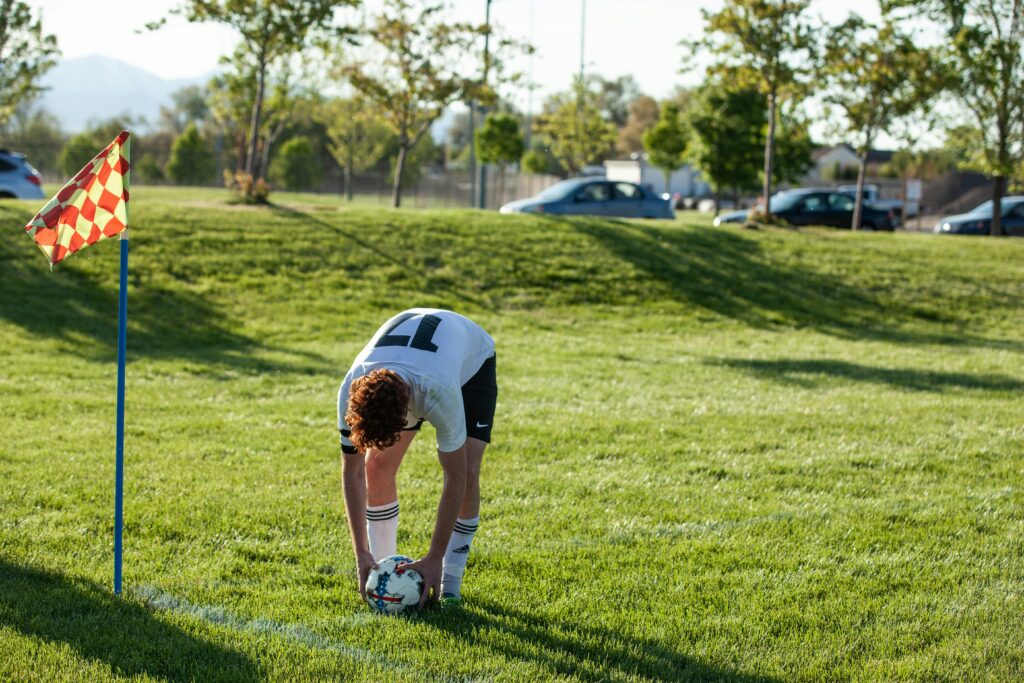Under the Lights: Rituals and Superstitions in High School Football


High school football has always been about more than just the scoreboard. The energy builds long before kickoff as players, coaches, and fans prepare in their unique ways. While skill, training, and teamwork are the backbone of every team, game-day rituals and superstitions bring something extra to the field. These habits passed down from one generation to the next, are woven into the culture of the sport. Whether they involve a favorite pair of socks, a pre-game meal, or a team chant, these traditions help players find confidence and unity before the whistle blows.
The Power of Routine in Pre-Game Preparation
Routine is central to every high school football team. Players develop strict habits in the lead-up to a big game. Some might listen to the same playlist or follow an exact warm-up sequence every week. These routines can be deeply personal, offering a sense of control when facing the unpredictable nature of competition. For many athletes, repetition provides comfort. Knowing exactly what to expect before heading onto the field helps quiet nerves and build focus.
Coaches also play a role in shaping these pre-game rituals. Teams often gather in the locker room, where coaches deliver motivating speeches or lead the group in a prayer. These moments become almost sacred, setting the tone for the game ahead. By following the same pattern every week, teams feel connected and ready to face any challenge as a united front. For young athletes, these traditions become a source of strength and a sense of belonging.
Superstitions and Their Role in Boosting Confidence
Superstitions are a natural part of high school football. Some players wear the same undershirt for every game, while others carry a lucky charm in their gear bag. These actions may seem odd to outsiders, but they have real meaning for the athletes. Superstitions can help players believe in positive outcomes, even when nerves are at their highest. The idea that a specific action or item might bring good luck provides an extra boost of confidence.
Teammates often share superstitions, creating an environment where even the smallest gestures matter. For example, some teams never step on the painted school logo in the locker room, believing it shows respect and brings good fortune. When everyone buys into these beliefs, it adds another layer of unity to the group. The mental comfort these habits provide should not be underestimated, especially when the pressure of a big game sets in.
Traditions That Shape Team Identity
Traditions in high school football are more than just habits—they help shape a team’s identity. These might include team dinners on the night before a game, walking onto the field in a specific order, or touching a unique sign before heading to the stadium. Such rituals are often handed down from older players to newcomers, giving everyone a sense of history and purpose. Participating in these long-standing customs makes each player feel like part of something bigger.
Community involvement is also a big part of high school football traditions. Parents, alums, and local fans often have their rituals, from tailgating in the parking lot to waving homemade banners in the stands. These shared experiences help turn each game into a memorable event, reinforcing the bond between the team and its supporters. As the season progresses, these traditions create lasting memories that stay with players long after their final game.
How Rituals Help Manage Game Day Pressure
Game day can be stressful, especially for young athletes who are still learning how to handle nerves and expectations. Rituals and superstitions provide a sense of security, offering something familiar amid uncertainty. Simple actions, like tapping a helmet three times or saying a short prayer, become tools to manage anxiety and sharpen focus. Over time, these rituals can become second nature, automatically signaling to the brain that it’s time to compete.
The power of group rituals should not be overlooked. Teams often gather for a final huddle, chant, or hand gesture before taking the field. These shared moments help everyone feel supported and connected. When pressure is high, knowing that your teammates share the same beliefs and routines can make all the difference. The sense of togetherness created by these traditions helps players perform at their best when it matters most.
Evolving Rituals: The Impact of Changing Times
While many high school football rituals have stood the test of time, new traditions are constantly being created. Social media and digital technology have changed the way teams connect and prepare. Some athletes now share motivational videos with teammates before games or post encouraging messages online. These new habits blend with older rituals, showing that the culture of high school football is constantly evolving.
Coaches and players alike are recognizing the importance of healthy, positive rituals. As awareness of mental health in sports grows, teams are adopting new traditions that focus on well-being and resilience. Whether it’s group meditation, visualization exercises, or gratitude circles, these modern rituals help athletes manage stress and build confidence. This blend of old and new keeps the spirit of the game alive for each new generation of players.
